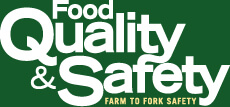School food program managers are the unsung heroes of the food service industry. While they oversee the production of breakfasts and lunches for hundreds or thousands of students each day, they also have to meet federal nutrition requirements, stay on top of food safety and food allergy issues, support and motivate their employees, maintain kitchen equipment, and turn out meals that the children will actually eat—and do it all for about $3 per meal.
School cafeterias are widely considered some of the safest, cleanest places to eat. However, when school food safety issues or foodborne illnesses arise, the consequences can be serious: sick students, missed classroom time, and damaged public trust.
Some grocery retailers, restaurants, and food producers are using inexpensive new Industrial Internet of Things (IIoT) technology to detect and prevent food safety problems. IIoT technology can do the same for school food safety. It can also help to reduce food waste, save money, and make program oversight more efficient and less stressful for managers.
What Is the Industrial Internet of Things?
In general terms, the IIoT is a secure remote wireless network of battery-powered, inexpensive smart devices that record and send a steady stream of data to a “bridge.” The bridge is a computer that stores and analyzes the sensor data with powerful machine-learning tools. That data analysis helps managers plan more efficiently and respond to problems faster.
For example, an IIoT school food safety network can include remote wireless temperature and humidity sensors placed in coolers, remote wireless vibration sensors near cooler motors to detect mechanical problems and tracking tags on incoming food that show where the food originated, who transported it, the temperature it was kept at in transit, and other important data.
All this data goes to the bridge, where managers can see it on their smartphones and computers. Here are some ways they can use that information.
Real-Time Insight into Freezer and Cooler Operation
Proper food storage temperatures are the cornerstone of food safety. Remote wireless temperature sensors and humidity sensors can alert managers right away if a freezer or cooler is too warm to be safe. That early warning can give staffers time to move food to another cooler or freezer before it risks going bad. Real-time alerts can help prevent the kind of high-profile situation that Seattle-area schools faced in early 2019 when health inspectors found walk-in coolers that were far out of the safe temperature range.
Remote IIoT sensors in school kitchens can also save staff time. With this technology, there’s no need for manual temperature recordings or manual data entry of temperature logs.
Reduce Unplanned Equipment Downtime
IIoT systems can head off unexpected problems with coolers. Remote wireless vibration sensors placed near the motors can detect subtle changes in the way the motors work. These changes can show managers that the equipment needs service.
Over time, as the IIoT system collects and analyzes more vibration data, it can help managers schedule maintenance exactly when it’s needed, rather than on a set schedule. This type of predictive maintenance saves money on unnecessary maintenance calls as well as unplanned equipment outages.
Predict When Food Safety Problems May Arise
The more data a school kitchen’s IIoT system records, the better it can identify patterns and trends. Over time, the system builds a database that can help managers see when certain problems are most likely to happen.
For example, is the cooler temperature consistently out of range early in the morning? Maybe staffers are leaving the door open for too long while they bring out and prep items for the day ahead. On hot days, are the coolers more likely to operate outside the safe temperature range? Knowing what’s causing these problems can help managers solve them.
Equipment monitoring, maintenance management, and trend identification are doable now. There are more IIoT food safety solutions in the works that may help school food programs in the next few years.
Track Incoming Food Items and Know Their Condition on Arrival
FDA announced this year a goal to digitally trace U.S. food from farm to kitchen. Right now, most food storage and transportation records are kept on paper. Real-time digital information from tracking devices will enable faster recalls in case of foodborne illness outbreaks. Some grocers, including Walmart and Hy-Vee, already use RFID tags to monitor products in transit to their stores.
Expect to see more real-time monitoring of the food chain as FDA and entrepreneurs work toward this goal. Among more than 1,600 startups related to farming and the food supply chain, many are focused on tech tools to monitor food freshness and storage conditions in transit from farm or factory to customers.
This technology will be implemented by suppliers, not schools. But school food managers should be aware that it’s in development and may want to ask their suppliers about it.
On-Site Inventory Tracking
Small, inexpensive RFID tags can also monitor the location of packages and pallets of food items on site. This kind of tracking can alert managers to theft. It can also make menu planning more efficient, because it gives managers a clear view of what’s available and what’s running low.
IIoT systems are worth looking into for any school food program, where reducing costs, cutting waste, and increasing safety are priorities. IIoT food safety technology is already helping some retailers, restaurants, and food manufacturers work smarter and safer. It can do the same for schools and the children they serve.
Cece is the founder, president, and CEO of Swift Sensors. Reach him at [email protected].
In the News
Covered on these news sites. Click image to read more.

